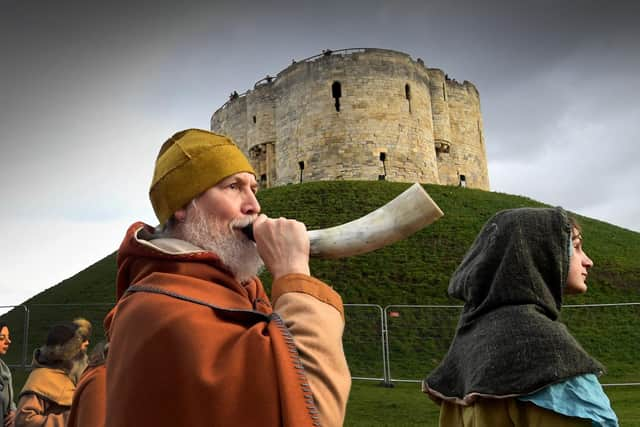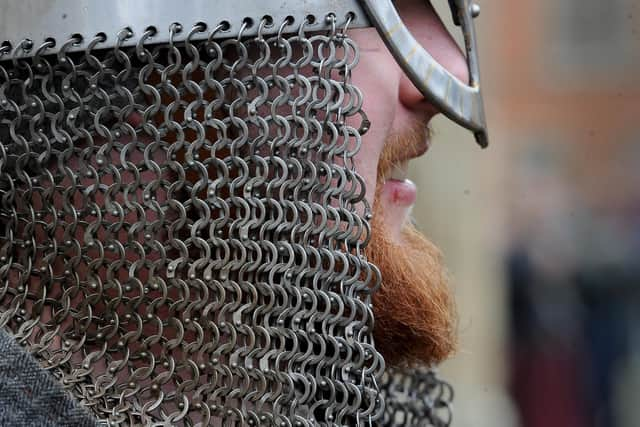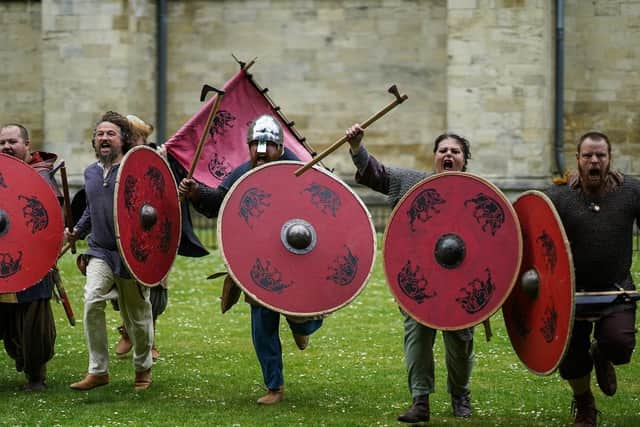Vikings in York: The history behind Yorkshire’s links with the Vikings and brutal invasion as new Channel 5 show airs
The Viking Age dates from around 800 AD to 1050 and although the original homelands of the Vikings were in Scandinavia, these countries did not actually exist until the end of the period.
From the late 8th century to the late 11th century Vikings raided, traded and settled throughout various areas of Europe and travelled as far as the Mediterranean, North Africa, Volga Bulgaria, the Middle East and North America.
Advertisement
Hide AdAdvertisement
Hide AdThey spoke Old Norse and made inscriptions in runes and for most of the era they followed the Old Norse religion, then later became Christians. They had their own architecture, art and laws and most Vikings worked as farmers, fishermen, craftsmen and traders.


The Viking era in Scandinavian history is thought to have been during the period from the earliest recorded raids by Norsemen in 793 until the Norman conquest of England in 1066.
The Normans were distant relatives of those Vikings who had been given feudal overlordship of areas in northern France, that is to say the Duchy of Normandy, in the 10th century. Descendents of the Vikings would have an influence in northern Europe and likewise King Harold Godwinson, the last Anglo-Saxon king of England, had Danish ancestors.
Two Vikings also ascended to the throne of England, with Sweyn Forkbeard claiming the English throne in 1013 until 1014 and his son Cnut the Great being crowned king of England between 1016 and 1035.
Advertisement
Hide AdAdvertisement
Hide AdPart of the invasion in 866 AD included raiding and capturing York, which they renamed Jorvik and excavation projects between 1976 and 1981 uncovered evidence of how Vikings lived and worked in York more than 1,000 years ago. The archaeological digs also found the significance of York to the Vikings.


The first episode of new three-part Channel 5 show The Vikings will air on Wednesday, June 21 at 9pm which will delve into the brutal history of the Viking invasion.
History of York’s connection with the Vikings
The invasion of York occurred on November 1, 866 AD and was led by Ivar The Boneless who renamed the city Jorvik with King Halfden.
Northumbria was going through a destructive period when the Vikings raided and captured York and as an up-and-coming Anglo-Saxon metropolis and robust economic hub, York was a significant target for the Vikings.
Advertisement
Hide AdAdvertisement
Hide Ad

Scandinavian army forces ambushed the town on All Saints’ Day and launched the assault as a tactical move as most of York’s leaders were in the cathedral, leaving the town vulnerable to attack and unprepared for battle.
Once the city was conquered, it was renamed from the Saxon Eoforwic to Jorvik and became the capital of Viking territory in Britain. At its peak it featured more than 10,000 inhabitants; this was a population second only to London within Great Britain.
Records show that the Vikings who settled in York were peaceful contrary to popular belief; they farmed the land and were known for being great craftsmen, traders, artists, engineers and builders of ships.
Under their rule, Jorvik was found to be a vital economic and trading centre for the Vikings and Norse coinage was created at the Jorvik mint, while archaeologists found evidence of a variety of craft workshops around the town’s central Coppergate area.
Advertisement
Hide AdAdvertisement
Hide Ad

Vikings worked in a variety of industries including textile production, metalwork, carving, glasswork and jewellery-making and materials from as far afield as the Persian Gulf were also discovered, which proposed that the then-town was part of an international trading network.
Eric Bloodaxe, who was the last ruler of an independent Jorvik, was driven out of the city in 954 AD by King Eadred.
The history of the Vikings in York continues to be a big draw in tourism and is consistently celebrated in the city through the Scandinavian name for a road ‘Gata’, which appears in street names including Stonegate and Petergate.
The mini excavation by York Archaeological Trust in 1972 uncovered that in Coppergate there are up to nine metres of archaeological layers which mostly date to the Viking Age and this depth is very uncommon.
Comment Guidelines
National World encourages reader discussion on our stories. User feedback, insights and back-and-forth exchanges add a rich layer of context to reporting. Please review our Community Guidelines before commenting.
